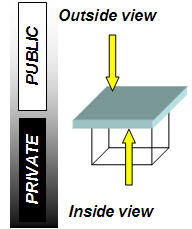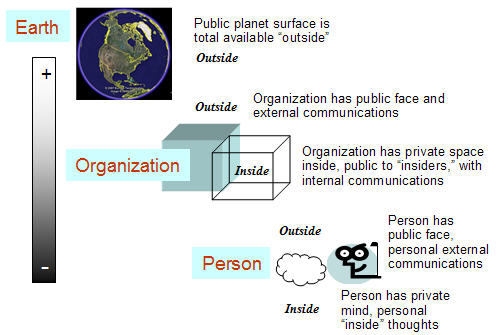Three great domains dominate organized human life on earth:
|
Appropriate public-private boundaries, and public or private to whom, is a matter of context and point of view
|
 |
3D organizations, groups, and positions have 2D surfaces inside and outside. External surfaces are generally public while internal surfaces are generally private to group members or jobholders, e.g., team rooms.
|
Identity/Boundaries: Outside-Inside, Public-Private
